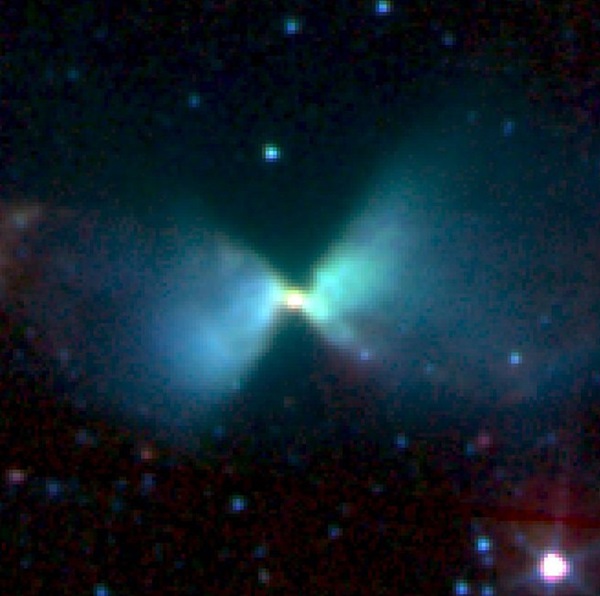Key Takeaways:
Background
A new star is formed by gravitational contraction of an interstellar molecular cloud consisting of gas and dust. In the course of this process, a gas disk — protoplanetary disk — whose size is on the order of 100 astronomical units (AU, where 1 AU is the Earth-Sun distance), forms around the protostar and evolves into a planetary system. The solar system was also formed in this way about 4.6 billion years ago, and life was eventually born on Earth. How unique in the universe is the situation that happened for the solar system? In order to answer this question, understanding the formation of protoplanetary disks as well as the associated chemical evolution in various star-forming regions is essential. There have been extensive observational efforts made toward this goal. So far, most of them have focused on changes in the physical structure and the kinematics during the formation process. However, it was difficult to distinguish the protoplanetary disk from the infalling envelope clearly with such conventional approaches.
On the other hand, the chemical evolution associated with disk formation has scarcely been studied observationally because of the insufficient sensitivity and spatial resolution of previous radio telescopes. As a result, a chemical model calculation with many assumptions is the only approach. Naturally, the physical and chemical changes in the disk formation should be coupled with each other. The disk formation around a young protostar has been explored from a novel point of view looking at physics and chemistry simultaneously.
Result
L1527 in the Taurus molecular cloud is a molecular cloud core that harbors a young protostar. A global team led by Sakai conducted high-sensitivity, high-spatial-resolution observations of L1527 with ALMA and investigated the disk formation process by using the spectral lines of several molecules.
As a result, they have found that carbon-chain molecules and their related species such as cyclic-C3H2 almost completely disappear from the gas phase inside a radius of 100 AU around the protostar. Precise measurements of the motion of the gas using the Doppler shift in the spectral lines of the gas components revealed that 100 AU corresponds to the radius of the centrifugal barrier. At this radius, infalling gas is stopped and accumulated due to the centrifugal force and then is gradually transferred to the inner disk; this is the edge of the disk-forming region. It has clearly been identified with the spectral line of cyclic-C3H2.
On the other hand, the distribution of sulfur monoxide molecules (SO) is localized in a ring structure located at the radius of the centrifugal barrier (100 AU). Furthermore, the temperature of the SO molecules is found to be higher than that of the infalling gas. This means that the infalling gas probably causes a weak shock when it rushes into the outer edge of the disk at the centrifugal barrier. The gas temperature is raised around this radius, and the SO molecules frozen on dust grains are liberated into the gas phase; hence, the spectral line of SO also highlights the disk formation front. Since the density of the disk is 108 CM3 or higher, most of the molecules are frozen out onto dust grains in the disk after they pass through the front.
It is not at all anticipated that such a drastic chemical change occurs in the transition zone between the infalling envelope and the inner disk. The disk formation and the associated chemical change have successfully been detected by observations of the two chemical species, cyclic-C3H2 and SO.
Outlook
This study has demonstrated a drastic change in chemical composition associated with disk formation around the young protostar. With a coupled view of physics and chemistry, it has also succeeded in highlighting the outermost part of the disk where the gas is still accreting. This success was realized by high-sensitivity and high-spatial-resolution observations with ALMA, and such a study will be extended to other various star-forming regions. In particular, it is very interesting to examine how widely applicable the picture seen in L1527 is to other star-forming regions. Although many observational efforts aimed at understanding planetary system formation have been made, this study is novel in focusing on the chemical change. By extending this new method to various solar-type protostars using ALMA, the diversity and generality of the chemical evolution from interstellar matter to planetary matter will be unveiled within the next few years. Then, scientists can critically examine whether the solar system experienced this drastic chemical change. In parallel to the astronomical approach, the origin of the solar system is being investigated by exploring the solar system itself through microanalysis of meteorites, spectroscopy of comets, sample return missions to the asteroids, and so on. The present study also will have a strong impact on these studies by tracing the origins back to interstellar clouds.










